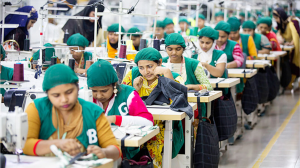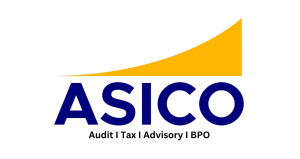- About Us
Overview
We are an award-winning advisory and accounting firm. We use our knowledge and experience to ensure your financial success.
- Our People
- Our Services
- Industries
- Career
- Insights
- Event And Gallery
- About Us
Overview
We are an award-winning advisory and accounting firm. We use our knowledge and experience to ensure your financial success.
- Our People
- Our Services
- Industries
- Career
- Insights
- Event And Gallery
Bangladesh Economy
Textile
Bangladesh has positioned itself as a noteworthy participant in the global garment industry, solidifying its standing as the second-largest garment exporter worldwide. The country’s noteworthy transition from economic adversities to a pivotal role in the textile and apparel sector serves as testament to its resilience and adaptability. Originating in the 1970s, amidst the aftermath of its Liberation War and the challenges of economic stabilization, Bangladesh’s garment industry predominantly catered to domestic demands with limited international exposure. However, through a sequence of economic reforms and strategic determinations, Bangladesh successfully penetrated the global market. Notably, the country’s garment sector substantially underpins its economy, accounting for over 80% of its total exports.
 The government has implemented policies to attract foreign investment and create a favorable business environment for the garment industry in Bangladesh. Incentives such as tax exemptions, duty-free import of machinery, and streamlined export procedures have been introduced. The industry plays a crucial role in the global fashion supply chain by providing cost-effective labor to multinational corporations. Despite facing challenges, efforts are being made to improve working conditions and competitiveness.
The government has implemented policies to attract foreign investment and create a favorable business environment for the garment industry in Bangladesh. Incentives such as tax exemptions, duty-free import of machinery, and streamlined export procedures have been introduced. The industry plays a crucial role in the global fashion supply chain by providing cost-effective labor to multinational corporations. Despite facing challenges, efforts are being made to improve working conditions and competitiveness.
Bangladesh’s garment industry has achieved global success due to its large, cost-effective labor force and competitive advantage in production costs. It has faced criticism regarding labor rights, workplace safety, and environmental sustainability. Efforts are being made to adopt sustainable practices and improve safety standards for workers.
Bangladesh’s garment sector faces challenges in maintaining competitiveness due to the rise of low-cost production centers in other countries. Despite this, multinational corporations have invested in improving working conditions and environmental standards in Bangladesh. Various international organizations and brands have also introduced initiatives to raise industry standards, such as the Accord on Fire and Building Safety in Bangladesh.
Tannery
Bangladesh has 2 percent of the global livestock, allowing its tanneries to satisfy about 1 percent of the global demand for leather. The country is known for producing high-quality leather and exports crust leather, finished leather, and split leather. Bangladesh’s leather industry has the potential to earn billions of dollars annually. The average annual domestic sales of leather footwear amount to around Tk 16,000 crore. In Bangladesh, there are 200 tanneries and 223 leather and leather product manufacturers.
The leather sector in Bangladesh is struggling to compete globally despite having plenty of raw materials and workers. Issues such as poor compliance with international standards, shifting buyers, and low local demand for high-value products have hindered the sector’s export potential. Additionally, harassment by government agencies has limited the scope for value addition in the sector. Notably, only five tanneries hold certification from the Leather Working Group (LWG): Apex Tannery, Riff Leather, SAF Industries, Superex Leather, and ABC Leather. Furthermore, local exporters are hindered in their ability to distribute tanned hides to established international retailers in Europe, North America, and other key markets as a result of inadequate compliance at the STIE.
The local leather sector has the potential to increase exports to $5-7 billion by using locally available leather to tap into the $300 billion global market. Bangladesh produces 3.5% of global rawhide but currently underutilizes this resource for exportable products. Bangladesh aims to boost leather exports by establishing a ‘leather industrial city’ in Savar and two tannery villages in Rajshahi and the Mirsharai area of Chattogram.
